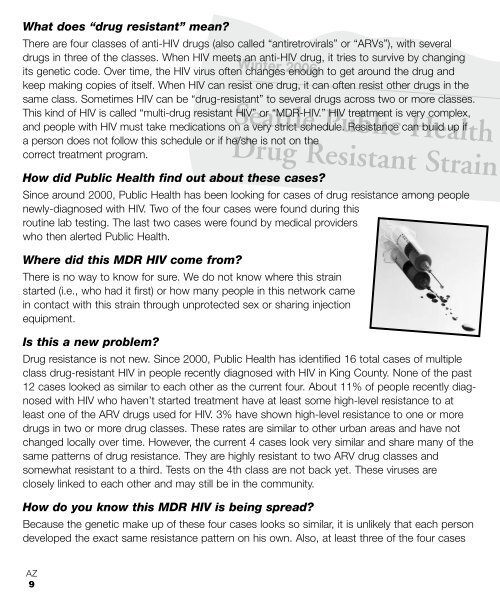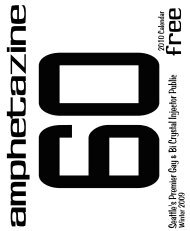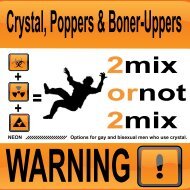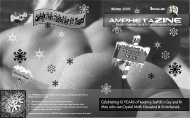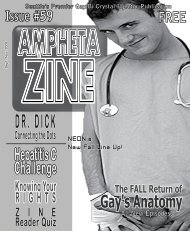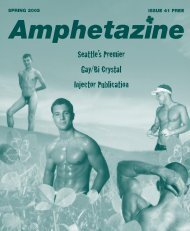Amphetazine - Project Neon
Amphetazine - Project Neon
Amphetazine - Project Neon
You also want an ePaper? Increase the reach of your titles
YUMPU automatically turns print PDFs into web optimized ePapers that Google loves.
What does “drug resistant” mean?<br />
There are four classes of anti-HIV drugs (also called “antiretrovirals” or “ARVs”), with several<br />
drugs in three of the classes. When HIV meets an anti-HIV drug, it tries to survive by changing<br />
its genetic code. Over time, the HIV virus often changes enough to get around the drug and<br />
keep making copies of itself. When HIV can resist one drug, it can often resist other drugs in the<br />
same class. Sometimes HIV can be “drug-resistant” to several drugs across two or more classes.<br />
This kind of HIV is called “multi-drug resistant HIV” or “MDR-HIV.” HIV treatment is very complex,<br />
and people with HIV must take medications on a very strict schedule. Resistance can build up if<br />
a person does not follow this schedule or if he/she is not on the<br />
correct treatment program.<br />
AZ<br />
9<br />
Winter 2006<br />
How did Public Health find out about these cases?<br />
Seattle Public Health<br />
Drug Resistant Strain<br />
Since around 2000, Public Health has been looking for cases of drug resistance among people<br />
newly-diagnosed with HIV. Two of the four cases were found during this<br />
routine lab testing. The last two cases were found by medical providers<br />
who then alerted Public Health.<br />
Where did this MDR HIV come from?<br />
There is no way to know for sure. We do not know where this strain<br />
started (i.e., who had it first) or how many people in this network came<br />
in contact with this strain through unprotected sex or sharing injection<br />
equipment.<br />
Is this a new problem?<br />
Drug resistance is not new. Since 2000, Public Health has identified 16 total cases of multiple<br />
class drug-resistant HIV in people recently diagnosed with HIV in King County. None of the past<br />
12 cases looked as similar to each other as the current four. About 11% of people recently diagnosed<br />
with HIV who haven’t started treatment have at least some high-level resistance to at<br />
least one of the ARV drugs used for HIV. 3% have shown high-level resistance to one or more<br />
drugs in two or more drug classes. These rates are similar to other urban areas and have not<br />
changed locally over time. However, the current 4 cases look very similar and share many of the<br />
same patterns of drug resistance. They are highly resistant to two ARV drug classes and<br />
somewhat resistant to a third. Tests on the 4th class are not back yet. These viruses are<br />
closely linked to each other and may still be in the community.<br />
How do you know this MDR HIV is being spread?<br />
Because the genetic make up of these four cases looks so similar, it is unlikely that each person<br />
developed the exact same resistance pattern on his own. Also, at least three of the four cases


